SPECIAL REPORT: Shifting Gears
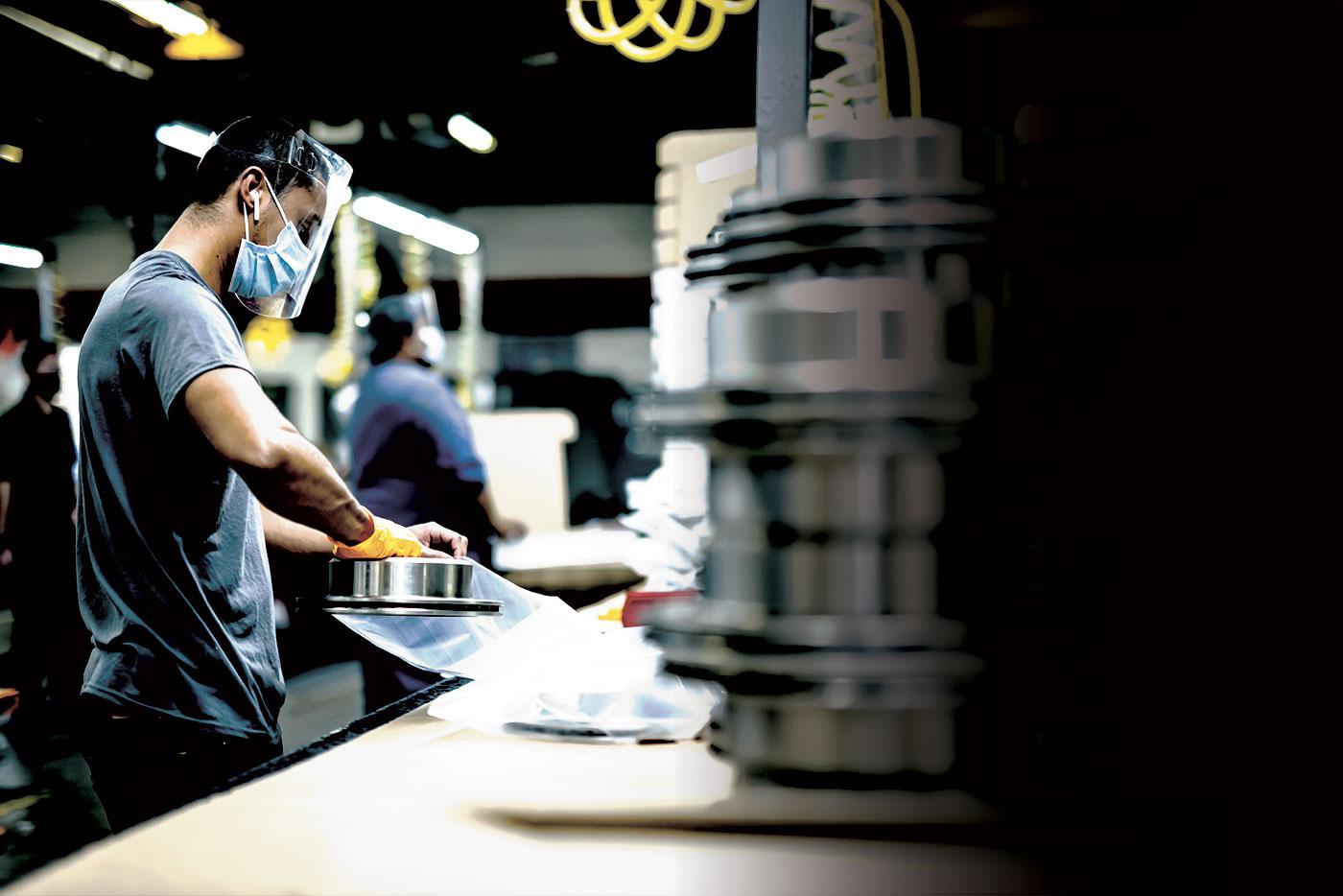
The motorsports industry answered the challenge of the global pandemic, but are there lasting effects from this pivot to health and safety equipment?
Few people will ever forget those early days of the COVID-19 pandemic in the spring of 2020. The world came to a grinding halt as individuals, governments, and industry attempted to navigate the uncertainty, fear, and health consequences of the rapidly spreading virus and the response to it by governments worldwide.
However, a number of companies from the motorsports industry sprang into action like it was the final pit stop at the Indianapolis 500. These businesses pivoted from producing racing parts to manufacturing health and safety equipment with sometimes astonishing speed.
To get a sense of the lasting impact (if any) of these excursions into the personal protective equipment (PPE) market, we wanted to follow up with these companies as this month marks two years since the COVID breakout led to disruptions within the American economy and the pandemic disruptions that still linger. Were motorsports companies still making these products? Did that pivot to health and safety equipment deliver any lasting business opportunities? What lessons were learned?
With the company representatives we spoke to, the different stories have very similar elements: a recognition of need for safety equipment, a desire to keep employees working, and a rapid swing into action. And, ultimately, a step back from COVID-related products as demand for racing parts came roaring back. All the companies leveraged their own unique capabilities to get the wheels turning.
Think Fast
Impact Racing in Indianapolis, Indiana, is a manufacturer of driver suits, racing gloves and footwear, and other related products. Like so many businesses in the spring of 2020, the crew at Impact suddenly found themselves with plenty of free time on their hands.
“March 2020 the world came to a halt,” said Ben O’Connor Jr. “As manufacturers of motorsports safety equipment, the wheels screeched to a halt. Nothing was going for us. It wasn’t a money thing; people just didn’t need anything because they weren’t racing.”
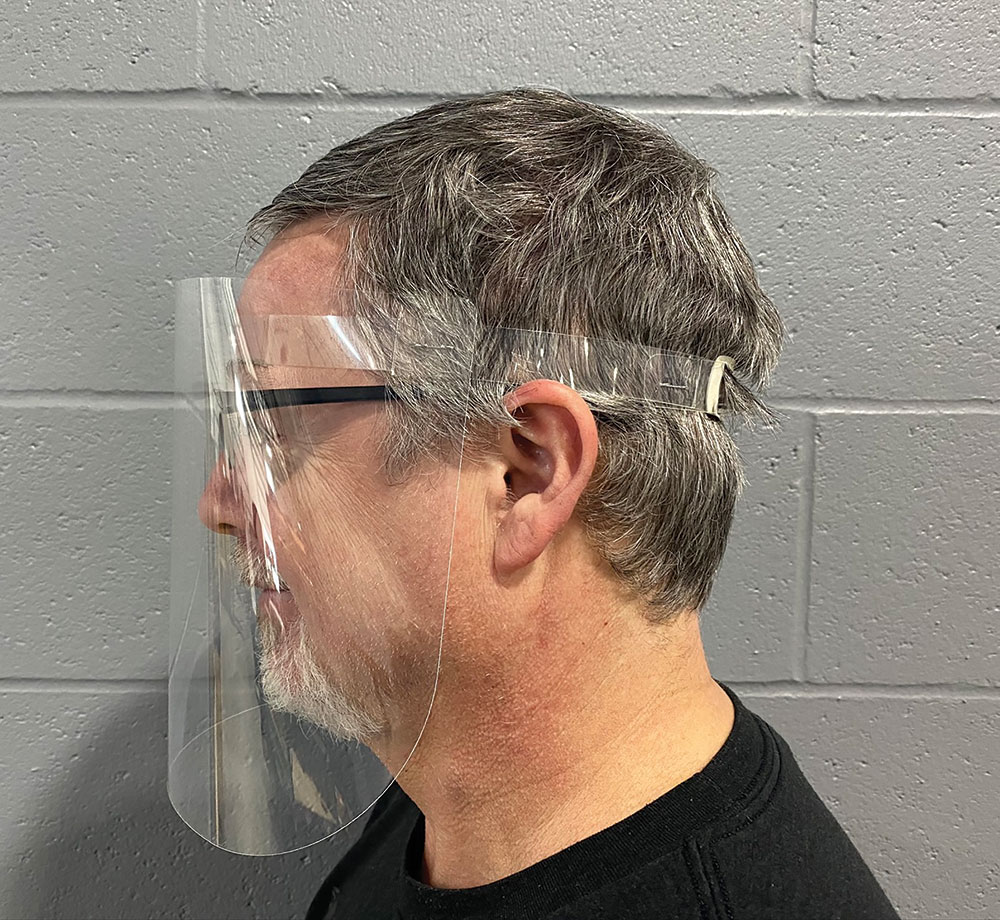
While following the news, O’Connor said he became aware of the shortage of PPE, which sparked an idea. “I thought, ‘It sure would be cool if we could do that,’ but the FDA requirements to get involved in that—I did some research—are just mind-numbing. The red tape to be able to do that was just nuts. Well, one day they came on and said, ‘Hey, we’re lifting these restrictions so that companies can get more involved. We’re going to remove some of the hurdles for companies to get involved.’ From that point, it was ‘Game on. We can do this.’”
As a maker of garments, Impact was in an ideal position to address the need for outerwear. “The big thing for us was the gowns. There was a big shortage of gowns as well as all types of things,” O’Connor explained. “In our world, in the cut-and-sew world, the two things from a manufacturing perspective that we felt we could do were the masks and gowns.” Impact Racing’s isolation gowns were designed to block large particle droplets, splatter, and particulate matter, to be used when FDA-cleared gowns or formal surgical gowns were not required.
For some businesses, word spread through personal connections within the medical industry. That was what lit the flame at Fleece Performance in Pittsboro, Indiana, a manufacturer of diesel performance parts.
“Brayden and Chase Fleece’s sister is a clinical nurse specialist at Hendricks Regional Health,” said Jeff Merriman of Fleece Performance. “She told Brayden they were in need of PPE, and face shields were one of the main items they were having trouble procuring. As we started reaching out to other state and local officials to see how we could help, we were told that face shields were on their list of needed PPE items as well. So Brayden and one of our engineers immediately started working on a design that could be quickly deployed to the healthcare industry.”
For VP Racing Fuels in San Antonio, Texas, the company’s background in chemicals made a quick transition to producing hand sanitizer a natural choice. “By nature, our VP team will rise to any challenge and made a seamless transition to the new packaging and distribution model,” said Bob Merz. “To meet demand, VP personnel from around the country traveled to our Tennessee plant to kick-off production and shipping for the first two weeks.”
Stratasys, headquartered in Eden Prairie, Minnesota, is a leader in the 3D printing space, with a printer division as well as a printing division. The company was ideally positioned to manufacture face shield visors and face shields at its various facilities.
“My team is the team that got behind it. I run the team that runs the internal labs. We got on it and started making them on day two,” said Pat Carey.
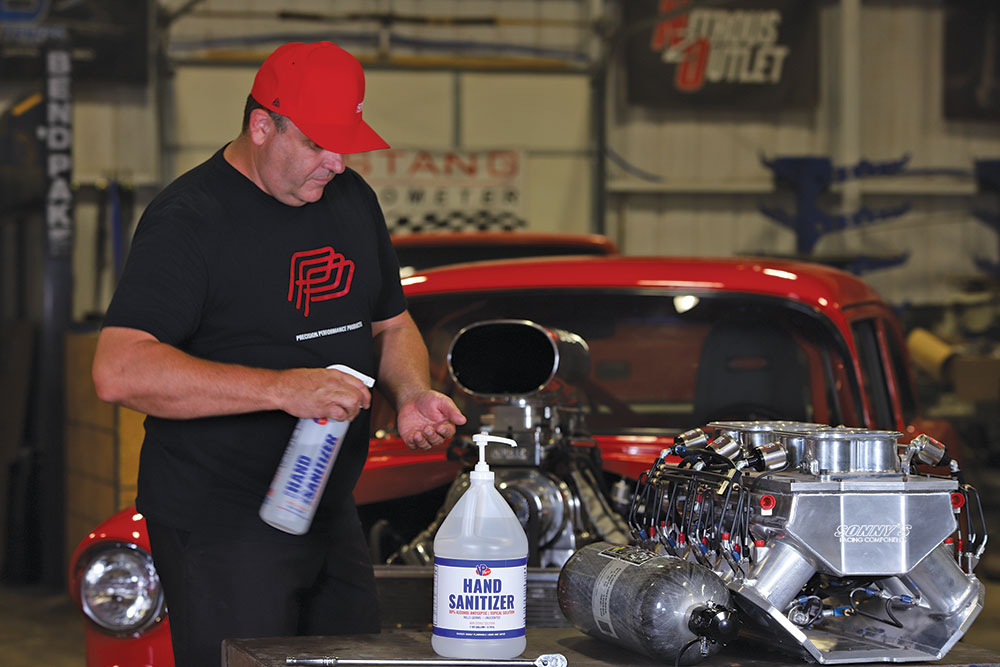
“We printed the band, and the shield was Mylar,” Carey said. “People didn’t print the actual shield. As it happens, a big part of our printing process uses Mylar. Our big printers actually print on Mylar, then we throw the Mylar away. We had many, many giant rooms full of Mylar that could be stamped into that shape. So not only did we do the 3D printing, we already had the Mylar. That was when the world was shut down and nothing was available.”
Lubrication Specialties in Mt. Gilead, Ohio, was another company able to shift production to hand sanitizer. “Hand sanitizer was so difficult to find, we originally wanted to manufacture hand sanitizer simply to donate to local businesses, industry partners, etc.,” said Eric Trimble. “We were in a unique position when the opportunity came up to produce hand sanitizer as we already have blending equipment, bottling lines, etc. We were already well positioned to switch over our manufacturing process to accommodate the demand.”
Labeled under the company’s LSI brand, Lubrication Specialties released hand sanitizer in 16-, 32-, and 64-ounce bottles, 1- and 5-gallon bottles, and bulk sizes including 55 gallons and 330 gallons.
Scaling Up
For many of the company sources we spoke with, the step from the motorsports niche into a more general market hungry for health and safety equipment delivered eye-popping sales, even if they were short-lived. “The demand was huge,” said VP’s Merz. “For example, the daily production of our hand sanitizer gallon-size package was over three times that of our ‘normal’ VP products. Our quart production exceeded the normal products by nearly five times.” In a company-wide email from May 2020 that VP shared with us that gave credit to all involved, the company highlighted “Reeling in the Whale,” a 300,000-gallon order from the Auto Zone parts chain.
“We had a record April [2020],” said Impact’s O’Connor. “The best April in the history of the company. When May came, the traditional supply chain started catching up—the 3Ms of the world, and so on. It was only a matter of time; we knew that. We figured it would be short-lived because we knew the traditional supply chain would eventually get caught up. And it did. So by about mid-May, that deal stopped.”
Stratasys assembled a team of some of its biggest customers and coached them on how to ramp up production of 3D-printed visor products. “Customers were calling us: ‘Can you help? Do you have materials? How do we work with you?’” Carey said. “So we built this COVID Coalition. We got together 150 of our customers, including most of the race teams that we deal with, like Penske, Andretti, and Gibbs, and said, ‘We can help you. We can send you the materials for printing.’ In a lot of cases I sent people free materials. I turned on stuff on their printers, features they didn’t pay for. And then we said, ‘Rather than you print and try to figure out where to send those, send them to us.’ We used our logistics team to distribute them.”
For companies that were able to contribute to the health and safety effort, word spread quickly. “We were very surprised by the immediate response on social media regarding the need for our face shields,” Merriman said. “In fact, those social media posts had the most engagement of any social media posts we have ever had. Many people that work in industries that were not able to order face shields through normal channels were reaching out to us to make smaller orders, between five and 500 at a time.”
The speed and efficiency with which the companies shifted gears revealed much about the quality of their workforces, our sources told us. “I was absolutely amazed at what they were able to accomplish in such a short period of time,” O’Connor said. “Everybody there came together as a team and just made it happen in such a fast time. It really just shows what people can do in time of need, when they really need to come together. That was impressive.”
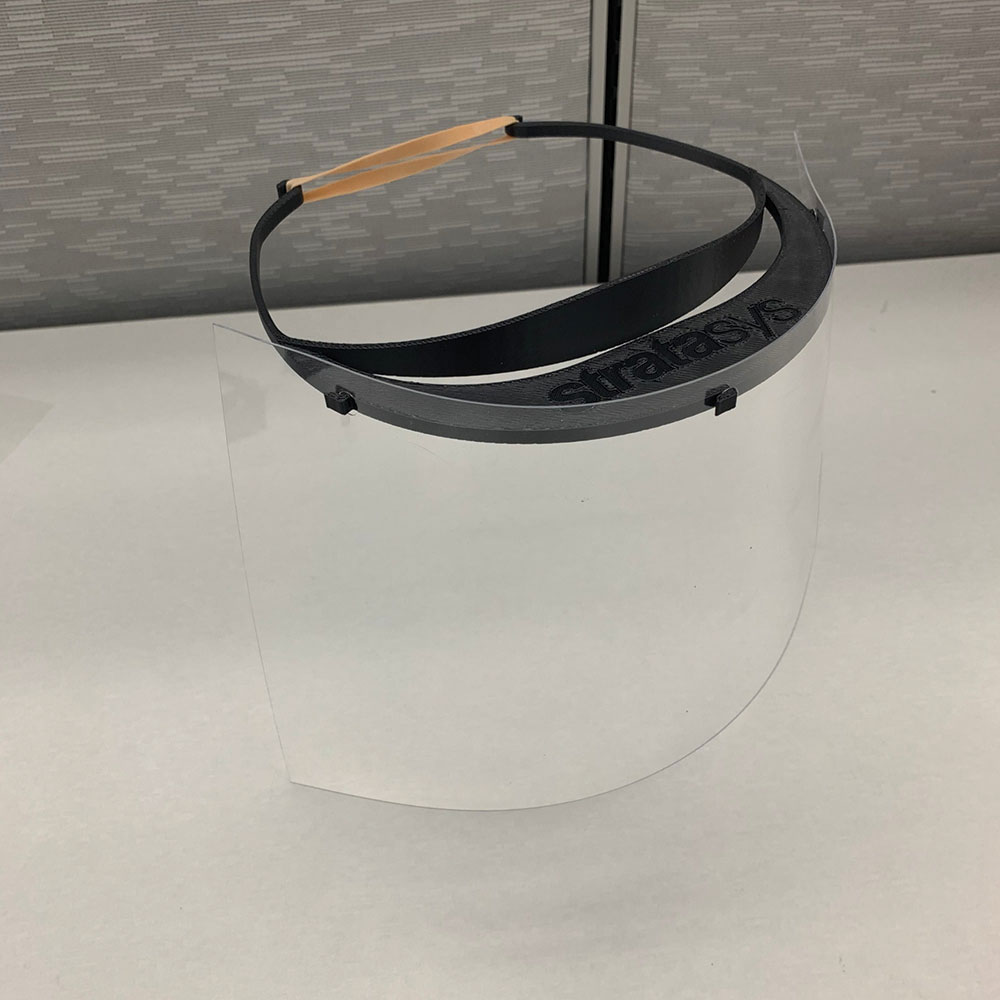
“Our guys were here working 12 to 18 hours. And they would say, ‘I feel good because I’m doing something. Otherwise I’m just a victim sitting at home,’” Carey said. “It was really good for our team spirit.”
Uncharted Territory
The success stories were many, but the health and safety market provided its share of chicanes that slowed things down, even under the emergency order that opened up opportunities to independent producers. “There are still strict guidelines,” O’Connor said. “We can’t call it PPE. Look at any of our literature and any of the stuff we did at the time, we never referred to this as PPE. It was ‘masks and gowns.’ You couldn’t say ‘medical gowns.’ We had to be very careful about how we worded it.”
Lubrication Specialties had similar run-ins with the legal fine print. “One of the largest obstacles were the legalities—the process of acquiring approval to produce hand sanitizer, ensuring we were meeting quality standards, and even the shipping process proved to be difficult at times,” Trimble explained. “There were companies that received an exemption to create hand sanitizer but ultimately lost those privileges because the quality of their product wasn’t meeting standards.”
Besides the immediate need for these products, the clock was ticking for another reason: The traditional supply chain was slowly but surely cranking back into gear.
“We got out of this quickly, because there was a cheaper, faster way to do it—eventually,” Carey said. “In the meantime, this group of 150, we made 100,000 of those shields and distributed them. But its time was over.
“We probably printed for about 180 days,” Carey continued. “The reason we started was, you couldn’t get them. There wasn’t enough PPE, and traditional manufacturing could not scale up fast enough.
“Eventually we had an injection mold made, and we started to mold those parts. It’s faster and cheaper,” Carey added. “But it took us like 12 weeks to do that. That’s the problem with traditional manufacturing. It takes a while. So when that spun up, it got cheaper and faster for everybody, so we stopped printing them. Then we started doing injection molding at a high volume.”
Business Impact
For motorsports businesses, the “all-hands-on-deck” phase of pandemic relief was relatively brief. Even so, some lasting operational insights and relationships were formed.
Stratasys worked with many companies that had 3D printing abilities, but often these businesses viewed it as a niche part of their operations. “The amazing aftereffect is that in a lot of these companies, 3D printing rose in its importance,” Carey said. “The top executives never realized how flexible it was. They hadn’t thought about this ‘bridge’ manufacturing. They hadn’t thought about the flexibility of these printers. In a normal factory, a sheetmetal roller, a cast machine, does one thing. If you want something else done, you buy another machine. A 3D printer can do almost anything. That’s what makes them unique. So it opened a bunch of doors for us. The aftereffect of this is that 3D printing grew because more people realized the power of it. We helped a lot of people.”
At VP Racing Fuels, the production lines have switched back to the traditional additives, lubricants, and other offerings. “We no longer regularly produce sanitizer though the product lines are still readily available,” Merz said. “The initial operation ran from April through November 2020, though we are capable of ramping up for special orders.” The experience gave the company the opportunity to test itself in fresh ways. “New products often highlight opportunities for improvement. Sanitizer quality, production, and distribution followed many of the same strict protocols we use for our race fuels and consumer products. Our most significant changes were to adapt to the massive scale and demand.”
The move into the hand-sanitizer market did yield new business relationships for VP as well. “New suppliers of needed materials surfaced. We even worked with one supplier, Plum Grove, Inc., to make custom stands for our gallon jug dispensers of hand sanitizer,” Merz added.
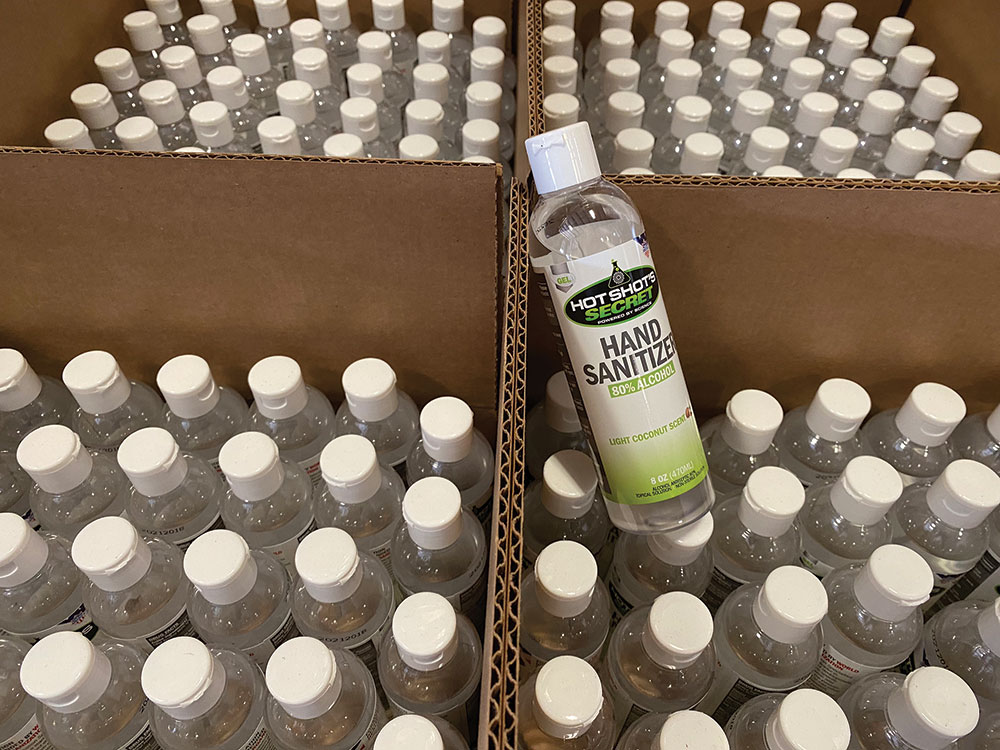
It was a similar situation at Lubrication Specialties. “While we still have hand sanitizer available for sale on our website, we are not currently producing any more,” Trimble said. “During the peak of the pandemic, demand was so great we were able to sell thousands of gallons.” Lubrication Specialties also forged some lasting business ties. “For example, one thing we wanted to do was support race tracks. The pandemic hit race tracks hard, and we wanted to help them reopen as smoothly as possible. We were able to donate and offer special pricing to race tracks across the country, so they had hand sanitizer readily available when they did open to the public. We’re grateful to have worked with some amazing people, and those relationships continue to this day.”
Fleece Performance produced face shields and sneeze/cough guards from March 2020 until January 2021. “There were a few other businesses we have relationships with now. Although we don’t do business on a regular basis, we are now connected. We have also made some really good contacts within our local, state, and federal government,” Merriman said. “It is always nice to be recognized for your efforts, and we definitely received more exposure than we expected. We were also mentioned in a web conference by Vice President Pence and featured on a few local media outlets. But that’s not the reason we did it. We were responding to a need to help frontline workers stay safe in a way that we knew we could quickly have an impact. It was also beneficial to help keep our workforce employed and busy during a difficult time for our business.”
O’Connor said that Impact Racing shipped the last of its special gowns in August 2020. “The masks we stopped making relatively shortly. We built several thousand of them, but for a lot of people, it’s a disgruntled purchase to begin with. If they have to wear one, they want it to be somewhat of a style statement. We just didn’t have that element of it.”
The mask-and-gown effort was successful enough that Impact explored the viability of it over the long-haul. “The thought was, ‘Can we do this long-term?’ But then it came back to the FDA thing,” O’Connor said. “We started looking at it. To do this legitimately to build and sell to these companies, we would have to have FDA approval. And again, the process for doing that is mind-numbing for a small company. I’m sure these big companies have full-time staff where that’s all they do, deal with FDA red tape and paper filings and testing.
“The other aspect of it was, because we build the best gown imaginable, we know that works well in motorsports. It’s a good business model, but not so much in the medical field, because in their world, it’s not worth it to them to take a gown and have it washed. They have to sanitize it, repackage it, bring it back.” The disposable, one-use business model for medical garments, almost all of which are sourced off-shore, is not one in which a domestic maker of quality racing apparel has any advantage, O’Connor added.
Even so, doors were opened. “We’ve looked at other areas in terms of safety equipment because of that,” he said. “Maybe not necessarily on the first-responder side of things, but maybe more toward industrial safety and things of that nature.”
While none of the companies we spoke with for this report are still producing the health and safety equipment they launched in 2020, it’s also clear that they have no regrets. Their efforts made a difference, they kept people working, forged new relationships, and learned a few lessons along the way. And if another global emergency rears its ugly head, they’ll be ready to spring into action.
SOURCES
Fleece Performance Engineering
fleeceperformance.com
Impact Racing
impactraceproducts.com
Lubrication Specialties
lubricationspecialties.com
Stratasys
stratasys.com
VP Racing Fuels
vpracingfuels.com
 MEMBERSHIP LOGIN
MEMBERSHIP LOGIN JOIN PRI
JOIN PRI


